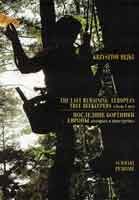500+ Wonderful Full Colour Images!
Comes with a 20 page English language translation booklet.
TO VIEW THE CONTENTS CLICK HERE
The book focuses on the ancient tradition of tree beekeeping. Those who cultivate this tradition have the instinct and passion to follow the rhythms of nature, so that they can understand and respect the innate preferences of the bees. Tree beekeepers often live in isolated rural areas. Mr Hejke’s photographs pay tribute to the way the beekeepers still live and work today. We are privileged indeed to get a glimpse into their everyday lives, beekeeping trade secrets, or even family history. Many families of the region mention their Polish roots.
The preservation of this fascinating form of low intervention beekeeping has been often aided by the relative geographical isolation. Away from the progress of civilisation, the tree beekeepers may seem like a product of a different era, almost like-in Hejke’s words -“the Indians of the Amazon”. Some of them live in eastern Poland, including the regions of Polesie, Kurpie and the Bialowieza Forest, others live in modern day Lithuania, Belorussia and Ukraine. Those tree beekeepers who live as far east as Siberia and the Kamchatka Peninsula may well have learned their craft from the Polish exiles and political prisoners of the 18th and 19th centuries. There were many instances of successful adaptation and implementation of beekeeping practice. For example, it was advisable to scatter some wood ash round the hives in early spring; on leaving the hive the bees could dip into the ash to protect their eyes from the sun’s glare on snow.
The book also mentions the indigenous inhabitants of the Altai Mountains, who were the only Siberian people who practiced natural tree beekeeping at the turn of the 19th century.



